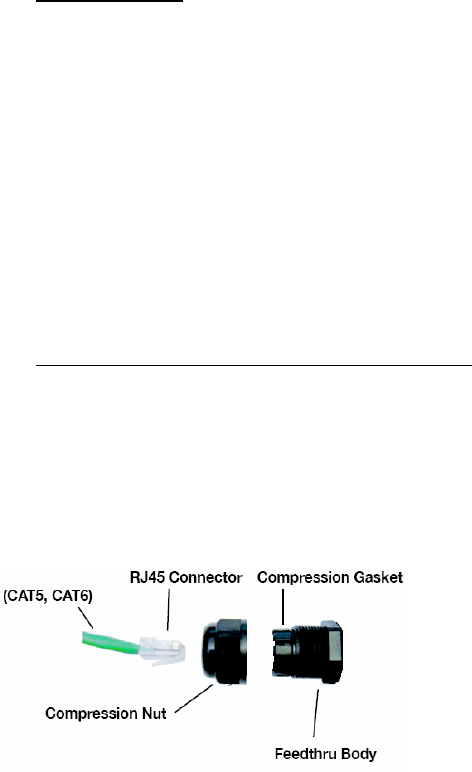User's Manual

7
7. Benchtesting
Before mounting units into their final location, it is recommended that the
system be benchtested to verify basic operation. The following benchtest steps
are suggested:
Setup. Each radio should be connected and configured per the previous
Sections, with a laptop or PC connected to each radio directly (or through a
hub/switch). Be sure that Access Control MAC addresses are correct and that
units share the same bandwidth, data rate and security settings.
It is also important to have identified and prepared the antenna, RF coax and
Cat5 solutions that will be used in the intended application
Positioning. It is important to remember that the SkyWay radio and antenna
system generate and transmit a great deal of RF power. During benchtesting,
antennas should not be pointed directly at each other. Rather, establish a
position so there is 90-180 degrees angular separation between units. Fine
tune the antenna position so that the Local RSSI is between -30 and -60 dBm.
Testing. If the system has been properly configured, the radios will begin
communicating immediately. The following steps are recommended to verify
operation:
• Link State. On the Main Status screen, verify that the RF Link State is
Green (connected).
• Local ping. From each laptop/PC be sure a ping to the local radio is
successful.
• Link ping. Now ping from one laptop/PC to the other laptop/PC. This
will verify the end-to-end link.
• Traffic test. Using Iperf or equivalent utility, verify traffic can be
passed successfully across the link.
Notes:
(a) Keep in mind that the SkyWay Excel data rates will stress the performance
of the PC hardware, operating system and IP stack. To ensure that this test
equipment is not a performance bottleneck, pre-testing PCs, by connecting
them directly to each other, is strongly recommended.
(b) Using a single FTP session on a typical Windows/Intel machine is not
adequate to accurately measure throughput.
(c) Units benchtested in an indoor, misaligned configuration should
not be expected to deliver full rated throughput.
8. Physical Installation
A. INTRODUCTION
Your SkyWay radio is designed with a flexible, multi-axis mounting system.
The radio can be mast, tower, pole or wall mounted using the appropriate
hardware. After determining the best location for your radio, installation can
begin.
To mount a SkyWay radio, both the mast mounting kit and Ethernet cable
feedthrough need to be correctly assembled. The recommended approach
consists of 3 steps, detailed in the following sections:
1. Ethernet cable / feedthrough assembly
2. Bracket preparation
3. Mounting
With the exception of the CAT5 cable, all parts and hardware described in the
following sections are included with your SkyWay radio.
B. ETHERNET CABLE / FEEDTHROUGH ASSEMBLY
Only a single Ethernet cable is needed to connect the SkyWay radio to the
indoor PoE Injector. Since the cable is exposed to the outdoor elements (heat,
moisture, and UV light), only outdoor rated, shielded Cat5 Ethernet cable
should be used. To ensure all-weather operation, the weatherproofing cable
feedthrough (also known as grommet or gland) must be properly assembled
onto the Ethernet cable and radio.
The following diagram depicts each of the feed-through parts:
Assembly Steps:
1. Remove the Compression Nut and slip it over the Ethernet CAT5 cable as
shown below.










